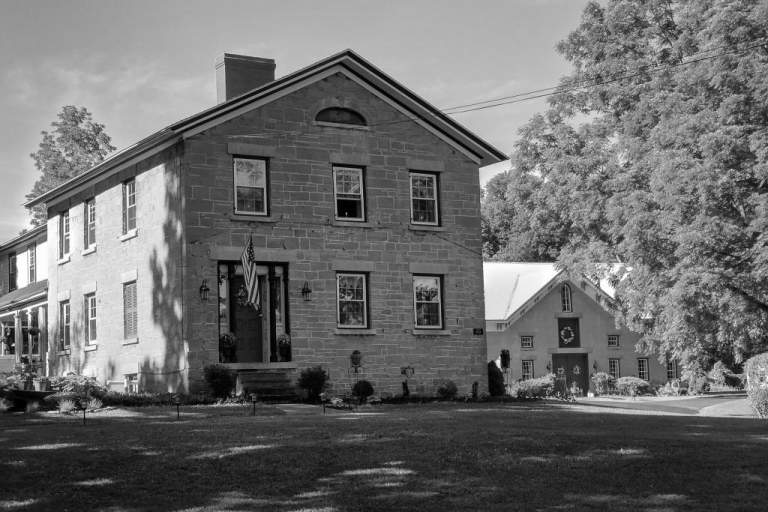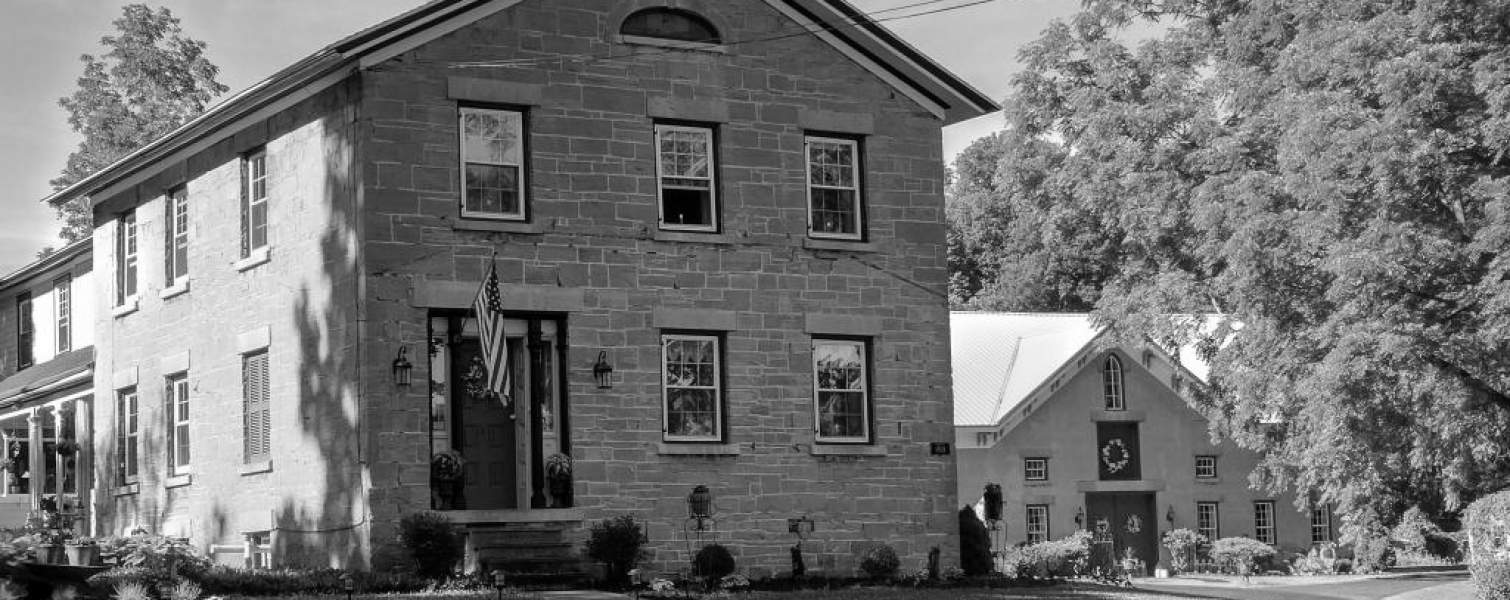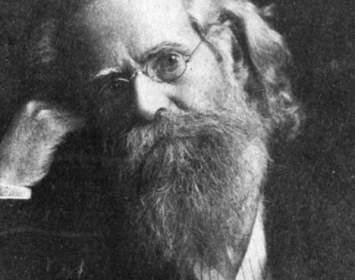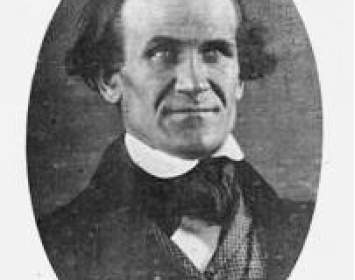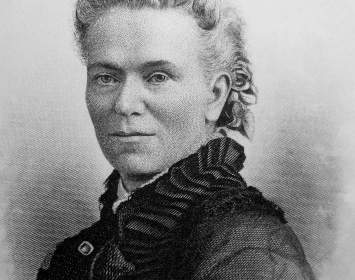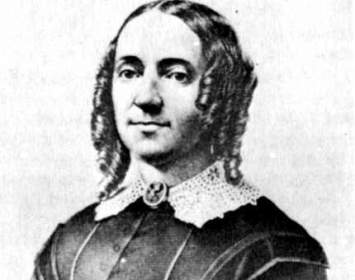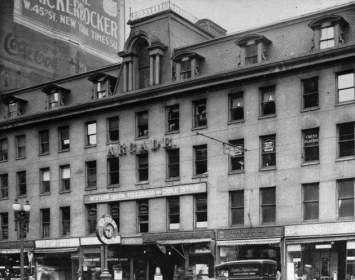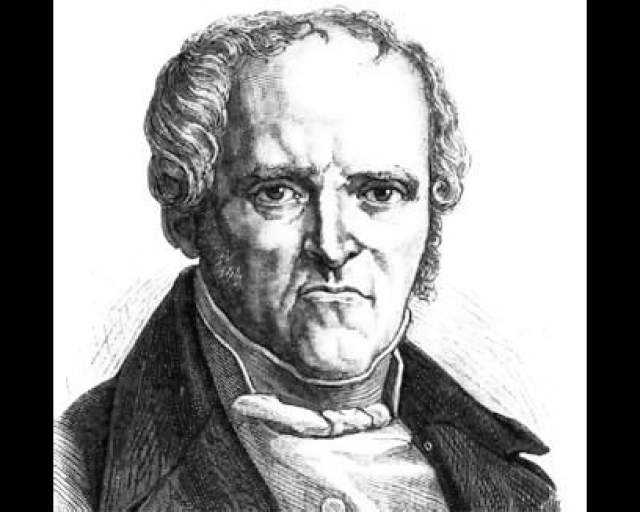The Skaneateles Community was an ostensibly Fourierist Utopian intentional community founded and led by the picaresque John Anderson Collins (birth and death dates unknown). Of the roughly three hundred Fourierist communes that sprang up across America in the 1840s, it was the only one founded on secularist principles and with a population made up largely of freethinkers. The communal experiment lasted three years—about the norm for Fourierist communes of that period.
Collins, a minister-turned-abolitionist-turned-socialist-reform-advocate, appeared in west-central New York State in the spring of 1843. He convened meetings in Syracuse and Skaneateles with the aim of establishing a Fourierist utopian community in the latter city. Fourierism advocated for communities organized into “phalanxes” freed from private ownership in order to provide economic comfort, social justice, and individual fulfillment.
Founding of the Community. In May 1843, the Skaneateles Community was founded as a joint-stock association. Among locals who embraced the project was the abolitionist, physician, and reformer Hezekiah Joslyn of Cicero, who joined a small committee to vet applicants seeking to join the Community.
In August 1843, Collins paid $15,000 (a sum he had raised from others) to purchase a 300-acre farm with buildings in the hamlet of Mottville, outside Skaneateles, for the new project. The property included a stone house, a barn, a mill, and other buildings. On October 14, the Community was formally launched with a convention held in the property’s barn. Speakers included Collins and the atheist firebrand Ernestine L. Rose. Attendees included Hezekiah Joslyn, his wife, Helen, and their teenage daughter Matilda, who would later gain fame as woman suffrage activist Matilda Joslyn Gage. (Nineteenth-century practice was to use the singular, woman or woman's, when referring to women as a class; later practice was to use the plural, women or women's.) Young Matilda was particularly excited at the prospect of living in this bold new Community.
Too Radical for Radicals. On November 19, 1843, Collins published a set of "articles of disbelief," formally committing the Community to a radical program of atheism, free love, rejection of government authority, the renunciation of private property, vegetarianism, and more. Hezekiah Joslyn was radical but not this radical; in particular, he was not drawn to atheism, free love, or the end of private property. Outraged that such commitments might be required of members, Joslyn withdrew and took his family with him. Four other pioneer Community members withdrew also.
Collins backtracked and issued a more moderate statement that said, in part, “We repudiate all creeds, sects, and parties …. We estimate a man by his acts rather than by his particular belief.” The Joslyns and the others who had withdrawn did not return, and still more departed over Collins’s still-radical program.
The Community Opens. Formal Community operations began in January 1844 with grounds and buildings in fine order but only ninety residents, well below the 150 originally projected. Despite the shortfall, Community members engaged in agriculture, blacksmithing, shoemaking, and carpentry; the group even published its own newspaper. Labor was arranged cooperatively, though not in close accord with the elaborate system prescribed by Fourier.
Nonetheless, the Community quickly found itself hopelessly undercapitalized, forced to rely on future revenues to meet current needs. In addition, Collins had set up idiosyncratic social and economic structures that were neither authentically Fourierist nor particularly coherent. Scholar Carl J. Guarneri called them "anarchistic" and "fatally centrifugal, setting members adrift to pursue their own brand of purity in disruptive fads and manias." In addition, there was dissension among Community members—some of it between vegetarians and meat-eaters, and some over the distribution of dwindling resources. Before long, the Community was slowly collapsing in the face of want.
Still, when famed reformer Robert Dale Owen paid a four-day visit to the Community in May 1845, members put up a brave front; Owen went away impressed with what he had seen.
Collapse of the Community. Nonetheless, on May 21 Collins published an article in the Community’s newspaper essentially conceding that the experiment was failing: he said the Community’s principles “might … do very well if men were angels, and angels Gods; but human nature is too low, too selfish and too ignorant for relations so exalted.” By August 1845, only twenty-six men, women, and children remained on the property. In February 1846, the Community applied to New York State seeking to incorporate as a municipality, a desperation move Collins hoped might make it viable again; when the legislature refused, the Utopian commune began to disintegrate in earnest.
A Skaneateles newspaper unfriendly toward the Community editorialized in April 1846 that “the bonds of infidelity are not suited to hold men together in social harmony.”
In May 1846, Collins called a meeting, declared the Skaneateles Community a failure, resigned as its leader, and promptly vanished.
Aftermath. One year later, two lecturers from Brook Farm, a Massachusetts Fourierist commune that was among the nation’s most successful (it lasted for six years before closing) visited the area to find minds closed to them in the wake of the fiasco at Skaneateles. They wrote that "Collins’s … No-God, No-Government, No-Marriage, No-Money, No-Meat, No-Salt, No-Pepper system of community," which left locals thinking “that Collins was a ’Furyite’ [Fourierite] just like ourselves, has closed the ears of the people in this neighborhood against our words.”
In 1850, from an unknown location, Collins completed the sale of the original farm property to Samuel Sellers, a former member of the Community. Thereafter, the property passed through various hands. In 1979, under the name Community Place, it was entered on the National Register of Historic Places. Today it operates as the Frog Pond Bed and Breakfast. The main stone house and some outbuildings from the Community period still remain.
An interesting presentation on the Community and its history is available here.
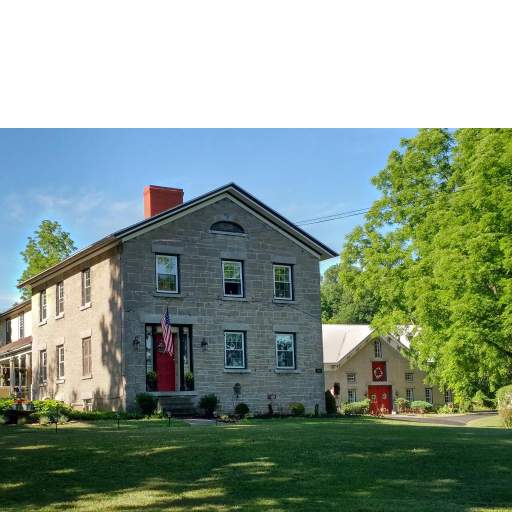
Skaneateles Community Site
The Frog Pond Bed and Breakfast now occupies the site of the Skaneateles Community.
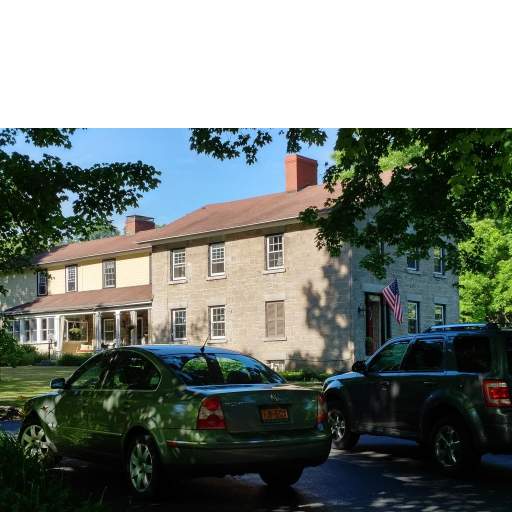
Side view, old house
Side view of the old house; compare it to the 1963 photo, Photo #4 in this series.

Barn
The barn is another original structure.
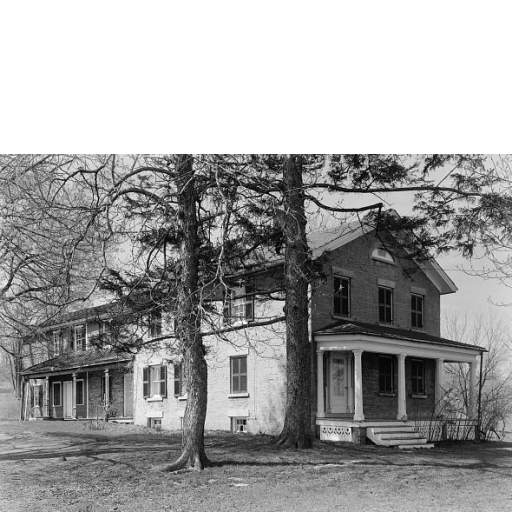
Period photo of main house
This U.S. Government photo of the main house was taken in 1963. Aside from removal of the front porch, the building has a very similar appearance today.
Associated Historical Events
Rise and Fall of Skaneateles Community
1843–1846
